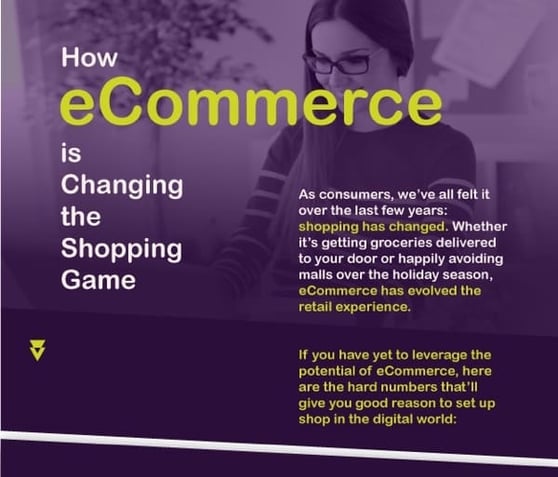Ecommerce has transformed the shopping game. It is also changing the way companies do their marketing.
“This here game is more than the rep you carry, the corner you hold. You gotta be fierce, I know that, but more than that, you gotta show some flex, give and take on both sides.”
For the uninitiated, the above is a quote from Stringer Bell, one of the main characters of HBO's The Wire. Often recognized as one of the best TV shows ever made, The Wire focuses on the law enforcement, drug trade, and political and educational systems of Baltimore, Maryland.
I'm sure most of you have figured it out by now but yes, I'm quoting a drug dealer in an article about digital marketing. But listen: Stringer Bell isn't just a drug dealer, he's an entrepreneur; he even goes to business school!
Despite his illegal industry, what Stringer says about "the game" is true of any industry, and that includes this here eCommerce game. In his own drug kingpin kind of way, Stringer is saying that in business, you need to be flexible and adapt when necessary; don't be content with what you've built, but instead be passionate about improving upon it at all costs.
With the wise words of Stringer in mind, we created an infographic to outline the opportunity businesses have to take advantage of eCommerce and all the ways it's changing the shopping game.
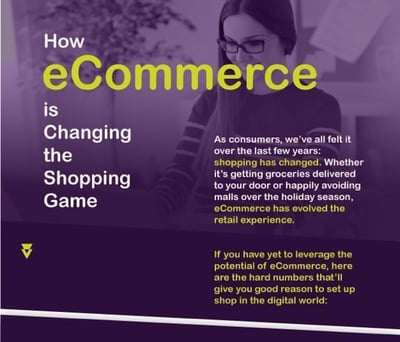 Ecommerce is dominating retail
Ecommerce is dominating retail
Be honest: if you had the choice between commuting 20 minutes to buy a product you don't immediately need, or to purchase it online and have it shipped to you within three days, which option would you choose? Does your answer change if I pose the same question during the holiday season (or one of the other big consumer days)? An increasing number of us are choosing the eCommerce option, and why not? In today's chaotic world, we're all short on time, so if we can save an hour or even 30 minutes and spend it with our family or friends, most of us are going to do it.
It's not like retail stores and malls are completely extinct (although they're certainly having issues in shifting to eCommerce). But there's still something about window shopping along a street full of shops, and there's no substitute for holding a product in your hand before you buy it.
There's a time and place for shopping in a store, but there's absolutely no doubt that eCommerce is carving out a larger share of the retail pie with each passing day...but we'll let the stats do the rest of the talking.
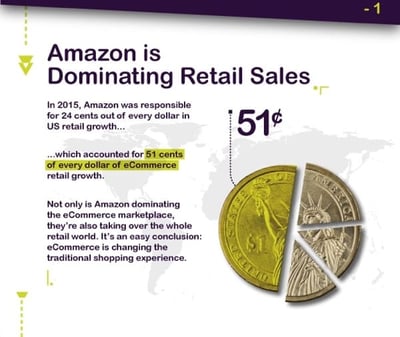
Just a second ago I described the reasons consumers like having the option to shop online in terms of feelings and emotions (it saves time and is less stressful). While I believe I'm right in assessing the desires of consumers as a whole, I guess I cheated because there are actually hard facts that back me up.
In 2015, online retail giant Amazon was responsible for 24 cents out of every dollar of US retail growth. So a quarter of all new retail growth ran through Amazon, which is just one eCommerce channel. As it turns out, Amazon is responsible for over half of every dollar in eCommerce growth. Needless to say, Jeff Bezos has Amazon in a league of their own, but the good news is the pace of eCommerce growth means there are enough seats at the table for everybody to play the game.
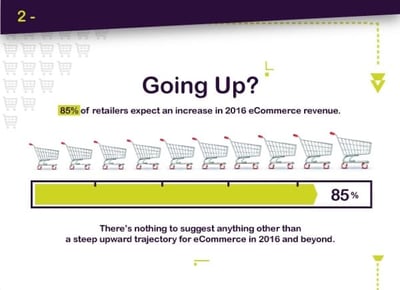 No surprise here, but 85% of retailers expect an increase in 2016 eCommerce revenue. The key is understanding that entering the eCommerce game isn't an automatic money making ticket. Just like anything else, you have to work at, adapt and expand what you have in order to continue making more.
No surprise here, but 85% of retailers expect an increase in 2016 eCommerce revenue. The key is understanding that entering the eCommerce game isn't an automatic money making ticket. Just like anything else, you have to work at, adapt and expand what you have in order to continue making more.
There is more than one way to set up an online store, not to mention dozens of technology platforms and integrations with which to build your shop. Yes, most businesses expect to make money selling their products and services online, but that expectation alone isn't enough - make sure you go out and earn it.
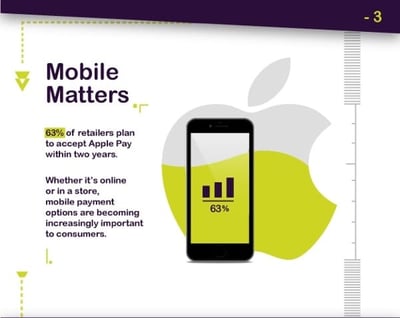 Mobile payment sits at the intersection of eCommerce and traditional retail because it exists in both worlds. Eventually, it'll be the standard eCommerce practice, and within the realm of traditional shopping, it's a technological advancement that makes life easier for consumers who do still venture out to retail locations.
Mobile payment sits at the intersection of eCommerce and traditional retail because it exists in both worlds. Eventually, it'll be the standard eCommerce practice, and within the realm of traditional shopping, it's a technological advancement that makes life easier for consumers who do still venture out to retail locations.
Case in point: 63% of retailers plan to accept Apple Pay within two years. If you're a brick and mortar retail store, it'd be a wise idea to start accepting mobile payments as soon as you can. And if you're launching an eCommerce business or already have one, make sure your platform accepts mobile payments.
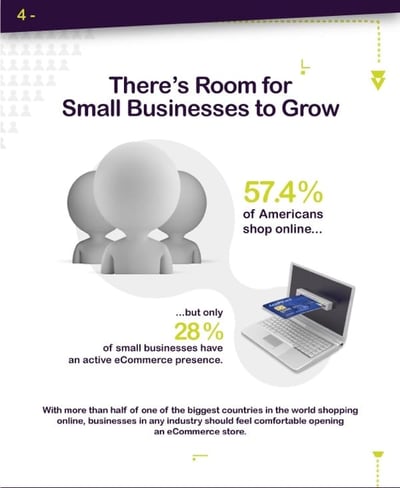
I imagine small businesses have a hard time hearing that over 50% of eCommerce runs through Amazon simply because of how unbelievable it seems. But given that 57.4% of Americans shop online, there's a lot of retail money to go around. Coupled with the fact that only 28% of small businesses even have an active eCommerce presence, the pool of direct competitors is actually pretty small.
How to take advantage of ecommerce's rise
Look at it this way: you don't have to go out and start the next Amazon. It's much simpler. People like to buy products and services online, so if you've got something valuable to offer, why not make it available for online purchase?
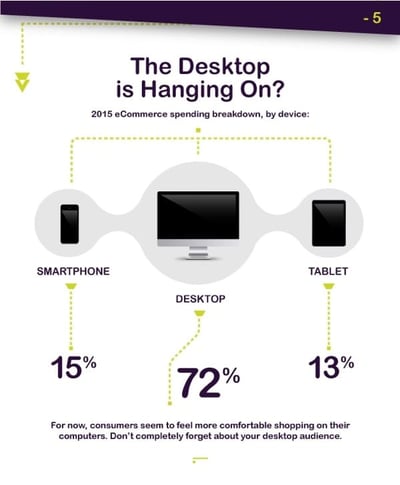 These days, everything in digital marketing is about phones and tablets, and with good reason: we're becoming more dependent on those devices. But in an interesting twist, 2015's eCommerce spending by device breaks down as follows: 72% on a desktop, 15% on a smartphone and 13% on a tablet. So for the time being, yes, the desktop is hanging on.
These days, everything in digital marketing is about phones and tablets, and with good reason: we're becoming more dependent on those devices. But in an interesting twist, 2015's eCommerce spending by device breaks down as follows: 72% on a desktop, 15% on a smartphone and 13% on a tablet. So for the time being, yes, the desktop is hanging on.
Why? My best guess is the larger screen offers consumers a semblance of the sensory experience they have while shopping in a store. We're used to seeing, touching and engaging with things while we're shopping, and that doesn't happen online. But a desktop offers a more visual experience than a phone or tablet, so in some ways this probably makes consumers feel more comfortable buying something they've never held.
That's all we've got for this edition of our monthly infographic, but be sure to check back next month to see what we come up with for April. Here's the full infographic, for your sharing pleasure:

For more information on how to improve your online shopping game content marketing, web design, and more, contact WSI.


